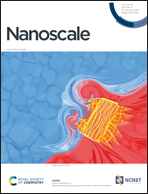Metasurface inverse designed by deep learning for quasi-entire terahertz wave absorption†
Abstract
Ultra-broadband and efficient terahertz (THz) absorption is of paramount importance for the development of high-performance detectors. These detectors find applications in next-generation wireless communications, military radar systems, security detection, medical imaging, and various other domains. In this study, we present an ultra-wideband THz wave metasurface absorber (UTWMA) featuring a composite surface microstructure and a multilayer absorbing material (graphene). This UTWMA demonstrates remarkable capabilities by achieving highly efficient absorption levels, reaching 96.33%, within the 0.5–10 THz frequency range. To enhance the efficiency and precision of the design process, we have incorporated artificial neural networks, which enable rapid and accurate parameter selection. Moreover, we have conducted a comprehensive analysis of the absorption mechanism exhibited by the UTWMA at different frequencies. This analysis combines insights from the electric field distribution and effective medium theory. The findings presented in this paper are expected to catalyze further research in the domain of broadband THz technology, particularly in the context of metasurfaces and related fields. Additionally, this work paves the way for the development of compact, supercontinuous THz photovoltaic or photothermal electrical devices.



 Please wait while we load your content...
Please wait while we load your content...